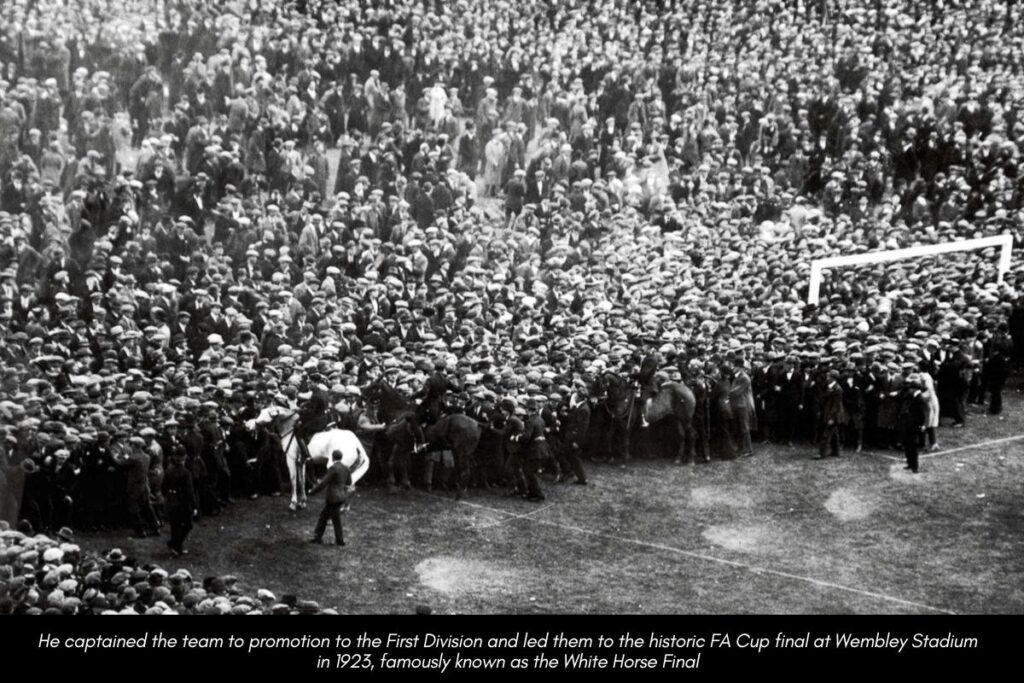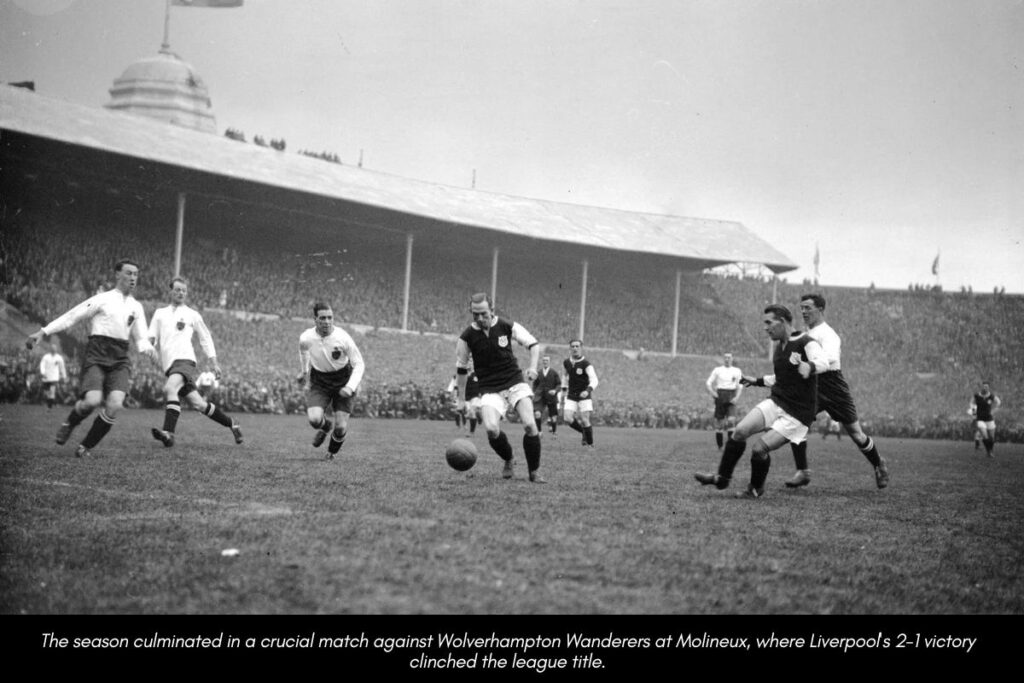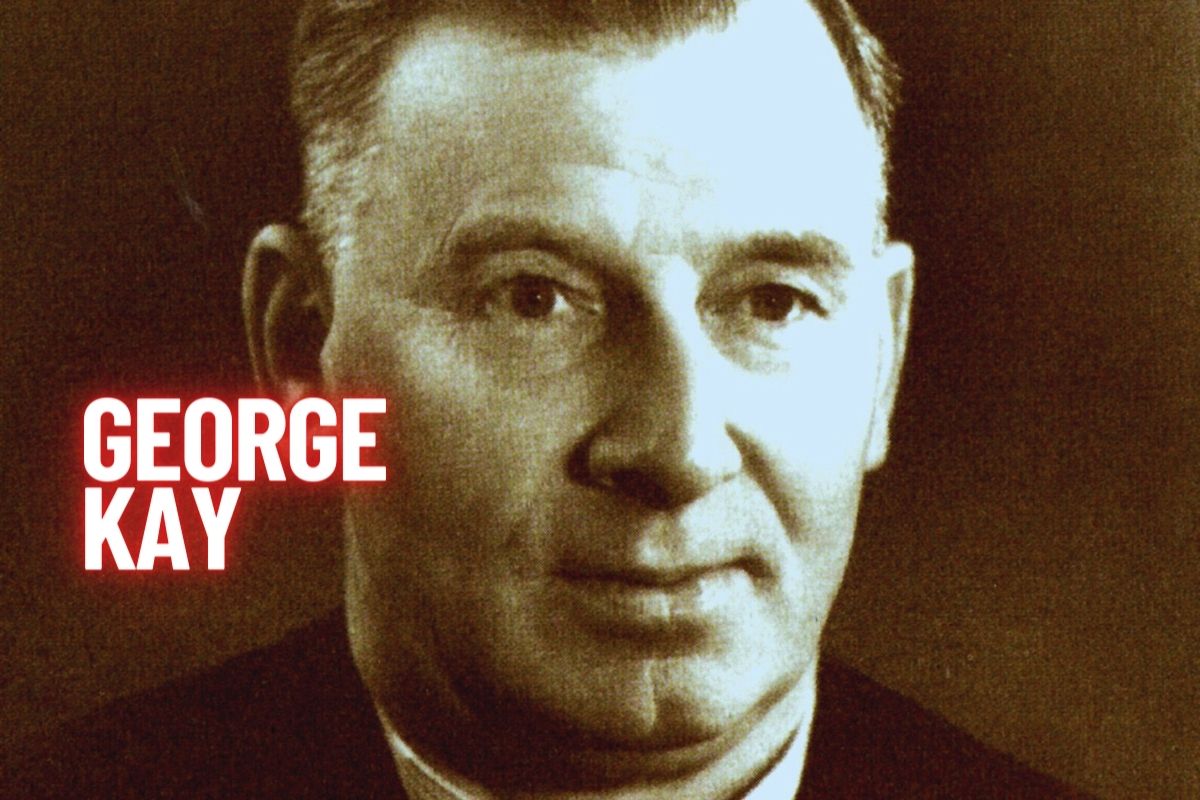George Kay’s arrival at Liverpool FC in 1936 marked the beginning of a transformative era. Despite the challenges posed by World War II, Kay’s strategic vision and leadership led Liverpool to their fifth Football League title in 1947. His tenure saw the signings of legendary players like Billy Liddell and Albert Stubbins, who became pivotal figures in the club’s history. As we delve into Kay’s managerial achievements and memorable moments, we’ll explore his legacy and the enduring impact he had on Liverpool FC during a pivotal period in English football.
Wembley Stadium and White Horse Final
George Kay, born on September 21, 1891, in Manchester, began his football career with Bolton Wanderers in 1911, making three league appearances before moving to Lisburn Distillery in Belfast. Despite a long-term injury, Kay made 91 league appearances and scored 14 goals, helping the club secure the Gold Cup and County Antrim & District Football Association Senior Shield. George Kay’s leadership qualities were evident as he became the first Englishman to captain an Irish Football League representative team.

After serving with the Royal Garrison Artillery during World War I, Kay joined West Ham United in 1919. He captained the team to promotion to the First Division and led them to the historic FA Cup final at Wembley Stadium in 1923, famously known as the White Horse Final, where West Ham lost 2-0 to Bolton Wanderers. Kay’s distinguished playing career spanned over 200 league appearances before illness forced his retirement. His journey from Bolton to West Ham and his achievements as a player laid the foundation for his later success as a manager, where he would leave an indelible mark on Liverpool FC.
Becoming a Coach
After retiring from playing due to declining health, George Kay transitioned into coaching and management. His coaching journey began at Luton Town, where he took over as manager in 1929. Despite modest results, Kay’s tenure laid the groundwork for future opportunities.
In 1931, Southampton recognized George Kay’s potential and appointed him as their manager. Kay implemented innovative strategies such as establishing a nursery side to bolster the squad economically, a move that proved beneficial with the emergence of talents like Ted Drake and Charlie Sillett. During his five-year tenure at Southampton, Kay’s focus was on improving the team’s performance in Division 2 and in cup competitions. Despite occasional home successes, including a perfect home record in the league in one season, inconsistency on the road hampered their overall progress. George Kay’s commitment and strategic acumen set the stage for his later success at Liverpool FC, where he would achieve significant milestones in English football.
Transition to Liverpool
In 1936, George Kay transitioned from Southampton to Liverpool FC under challenging circumstances. Financial constraints at Southampton led to a board reshuffle, prompting Kay’s departure despite his efforts to stabilize the team.

Liverpool, seeking new leadership after George Patterson’s shift to a secretarial role due to health issues, appointed Kay as manager in August. Initially, Kay faced difficulties with inconsistent results, including notable wins like a 7-1 victory over Grimsby Town contrasting with heavy defeats to Portsmouth and Brentford. Kay’s first season saw Liverpool narrowly avoid relegation, finishing 18th in the First Division. Despite a disheartening 6-1 defeat to Chelsea at the start of the 1937-1938 season, Kay gradually steadied the team. Liverpool improved their standing with mid-table finishes in subsequent seasons, showcasing Kay’s resilience and strategic adjustments.
As he prepared for the upcoming campaigns, Kay aimed to strengthen Liverpool’s competitive edge and build a team capable of sustained success in English football. His early challenges at Anfield set the stage for a transformative period, laying the groundwork for future achievements under his stewardship.
The First Division and FA Cup Final
George Kay’s tenure at Liverpool FC was defined by significant achievements and enduring contributions to the club’s history. Following World War II, Kay orchestrated a transformative period for Liverpool, marked by strategic signings and innovative approaches. Kay’s foresight in bringing in talents like Bob Paisley and Billy Liddell proved pivotal. Despite initial doubts during a rigorous tour of the USA and Canada, where Liverpool played ten games in under a month, Kay’s methods paid off. A remarkable run of seven consecutive wins between February and March set the stage for Liverpool’s triumph in the First Division, securing their first post-war title in 1947.
Simultaneously, Liverpool progressed in the FA Cup, reaching the semi-finals before being defeated by Burnley in a replay. The season culminated in a crucial match against Wolverhampton Wanderers at Molineux, where Liverpool’s 2-1 victory clinched the league title. However, subsequent seasons saw Liverpool falter in their quest for another championship, despite the continued brilliance of Jack Balmer and Albert Stubbins. In 1950, Kay led Liverpool to their second FA Cup final, which ended in a 2-0 loss to Arsenal at Wembley Stadium.

Kay’s health had been declining, and he chose to retire in January 1951. His dedication to Liverpool remained unwavering until his passing on April 18, 1954. George Kay’s legacy lives on, immortalized by his instrumental role in shaping Liverpool’s post-war success and the admiration of players like Billy Liddell, who acknowledged his sacrifices for the club.
Basket of Honours
George Kay’s managerial career at Liverpool FC, though marked by challenges, culminated in significant achievements for the club. Under his leadership, Liverpool secured the following notable accolades:
- Football League First Division: 1946-1947
Kay’s tenure as manager spanned 357 matches, with Liverpool winning 142, drawing 93, and losing 122, resulting in a win ratio of at least 39 percent. His contributions to Liverpool’s history include guiding the team to their first post-war league title, showcasing his tactical acumen and commitment to the club’s success during a pivotal era.
Conclusion
George Kay’s legacy at Liverpool FC is indelibly marked by his strategic prowess and dedication during a transformative period for the club. His leadership culminated in Liverpool’s triumph in the Football League First Division of 1946-1947, a testament to his managerial acumen and ability to navigate challenges. Despite facing health setbacks towards the end of his tenure, Kay’s impact on Liverpool’s footballing ethos and success cannot be overstated. His tenure exemplified resilience, tactical innovation, and a commitment to excellence that left an enduring imprint on Liverpool’s storied history, making him a revered figure among the club’s faithful.
Read all other posts on George Kay
Find the Latest News on Player Ratings | Transfers | Prematch | Postmatch
Stay tuned for more updates on Liverpool FC Times and Stories. Your thoughts are always welcome in the comments section. Thank you for your continued support!
YNWA (You’ll Never Walk Alone)!
The Liverpool FC Times Team
LiverpoolFCTimes.com
